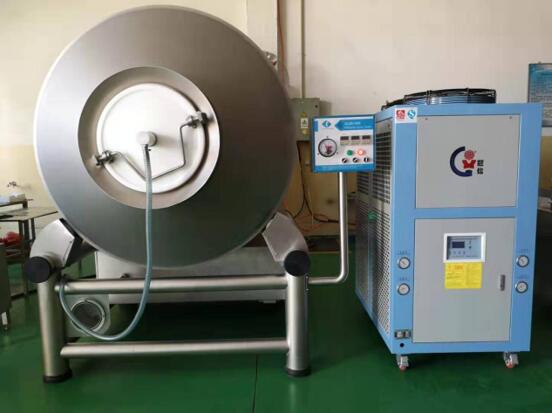Effect of Rolling and Kneading on Meat Quality (1)
Rolling and kneading refers to the process of rolling, falling and kneading the meat by rolling and kneading machine, so that the added salting agents and seasonings can quickly and evenly spread to the muscle fibrous tissue. Rolling and kneading can accelerate the penetration and color of the salting solution. Using the principle of physical impact, the salted meat falls down and rubs, resulting in meat relaxation and myofibril breakage, which greatly increases the penetration rate of the salting solution, and can also make the injected salting solution distribute evenly in the meat, thus absorbing a large amount of salt water. This not only shortens the salting process. In addition, the product yield and tenderness were improved.
Because of the friction, impact and extrusion between meat pieces, salt-soluble protein in muscle leaches and transfers to the surface of muscle. With the extension of massage or rolling time, its dissolution degree increases. They absorb water, starch and other fractals to form sticky paste, which enables different meat pieces to bond together and improves the stickiness of products.
1. Low Temperature Vacuum Rolling Technology
At present, low-temperature vacuum rolling technology is widely used at home and abroad. Horizontal rolling machine is placed in a low temperature condition for rolling and kneading, such as in 4-8 C cold storage, or advanced outer wall sandwich with refrigeration function, or rolling and kneading equipment with refrigeration function on pulp. In the rolling process, vacuum degree is required to reach -190kPa, this helps to reduce temperature rise and bubble formation caused by friction, as well as inhibit the growth and reproduction of harmful microorganisms. The quality of products is affected by rolling mode, meat size, rolling stroke, rolling machine load, vacuum, temperature and so on.

